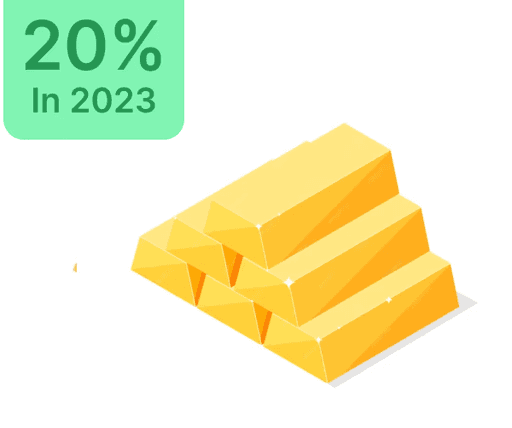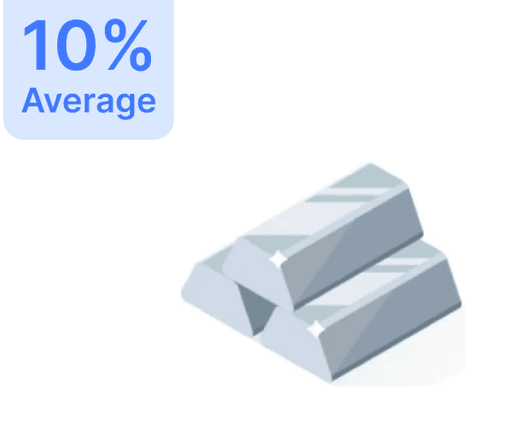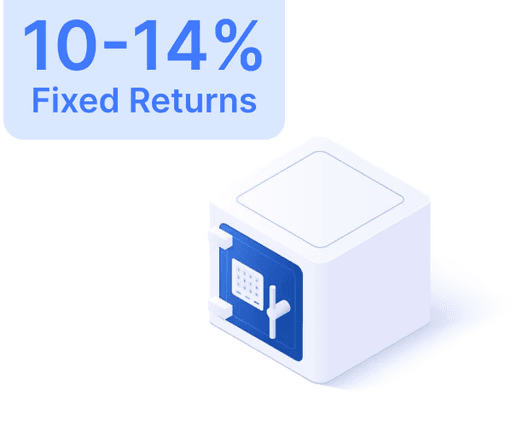
Why Invest in Multi-Asset Allocation Funds for 2024?

 Jun 14, 2024
Jun 14, 2024 5 Mins
5 MinsThe popularity of mutual funds as a top investment choice continues to rise for individuals seeking to grow their wealth. With an extensive selection of mutual funds on the market, choosing the best one can be a challenge. Multi-Asset Allocation Funds, a type of hybrid fund, stand out by investing a minimum of 10% across at least three different asset categories, typically involving a blend of equity, debt, and an additional asset such as gold or real estate.
The benefits of investing in these funds are numerous. They tend to involve lower risk than other hybrid variants because of their diversification across various asset classes, which helps in ameliorating risks that stem from individual asset groups.
Moreover, these funds often possess a lesser stock allocation, which might result in slightly reduced returns compared to pure equity funds in a bullish market. However, they offer increased stability and have the potential to deliver superior returns during market slumps.
Multi-Asset Allocation Funds are best suited for investors with a minimum investment horizon of three years, catering to long-term performance objectives.
Some of the top-performing Multi-Asset Allocation Funds for 2024 include: Quant Multi Asset Fund, SBI Multi Asset Allocation Fund, ICICI Prudential Multi Asset Fund, HDFC Multi Asset Fund, and Axis Multi Asset Allocation Fund. These funds have shown consistent return delivery over the past few years.
To start investing in these funds, you may register on the ET Money app or through their website. Choose your preferred fund, set your investment amount, and opt for your preferred mode, either SIP or Lumpsum, and conclude your investment by submitting your KYC details.
In summary, Multi-Asset Allocation Funds are an excellent option for diversifying portfolios and reducing risk. These funds blend varied asset classes to offer the potential for stable and consistent long-term returns. Selecting the appropriate fund is imperative, ensuring alignment with your investment objectives and risk tolerance.
- PFRDA
- SWIFT
- AUM
*[MSMEs]: Micro, Small and Medium Enterprises
*[CIBIL]: Credit Information Bureau (India) Limited
*[MICR Code]: Magnetic Ink Character Recognition Code
*[RTGS]: Real Time Gross Settlement
*[IMPS]: Immediate Payment Service
*[NEFT]: National Electronic Funds Transfer
*[NBFCs]: Non-Banking Financial Companies
*[TDS]: Tax Deducted at Source
*[KYC]: Know Your Customer
*[IRDA]: Insurance Regulatory and Development Authority of India
*[GRN]: Goods Received Note
*[PIN]: Personal Identification Number
*[OTP]: One-Time Password
*[Indian Succession Act, 1925]: Indian Succession Act, 1925
*[UPI]: Unified Payments Interface
*[RBI]: Reserve Bank of India
*[NSMs]: Micro, Small and Medium Enterprises
*[Muhurat Trading]: Muhrat Trading
*[UIDAI]: Unique Identification Authority of India
*[URN]: Update Request Number
*[SSUP]: Self-Service Update Portal
*[GST]: Goods and Services Tax
*[PDF]: Portable Document Format
*[SIP]: Systematic Investment Plan
*[ETF]: Exchange-Traded Funds
*[MICR]: Magnetic Ink Character Recognition
*[Folio No.]: Folio Number
*[PAN]: Permanent Account Number
*[SFB]: Small Finance Bank
*[NGO]: Non-Governmental Organization
*[KEGF]: Kerala Evangelical Graduates Fellowship
*[MED]: Micro Enterprises Development
*[AuM]: Assets Under Management
*[PFRDA]: Pension Fund Regulatory and Development Authority
*[Folio Number]: Folio Number
*[UPI PIN]: Unified Payments Interface Personal Identification Number
*[REITs]: Real Estate Investment Trusts
*[NRIs]: Non-Resident Indians
*[ETFs]: Exchange-Traded Funds
*[SEBI]: Securities and Exchange Board of India
*[SWIFT]: Society for Worldwide Interbank Financial Telecommunication
*[AUM]: Assets Under Management
*[UX]: User Experience
*[NPAs]: Non-Performing Assets
*[ESG]: Environmental, Social, and Governance




